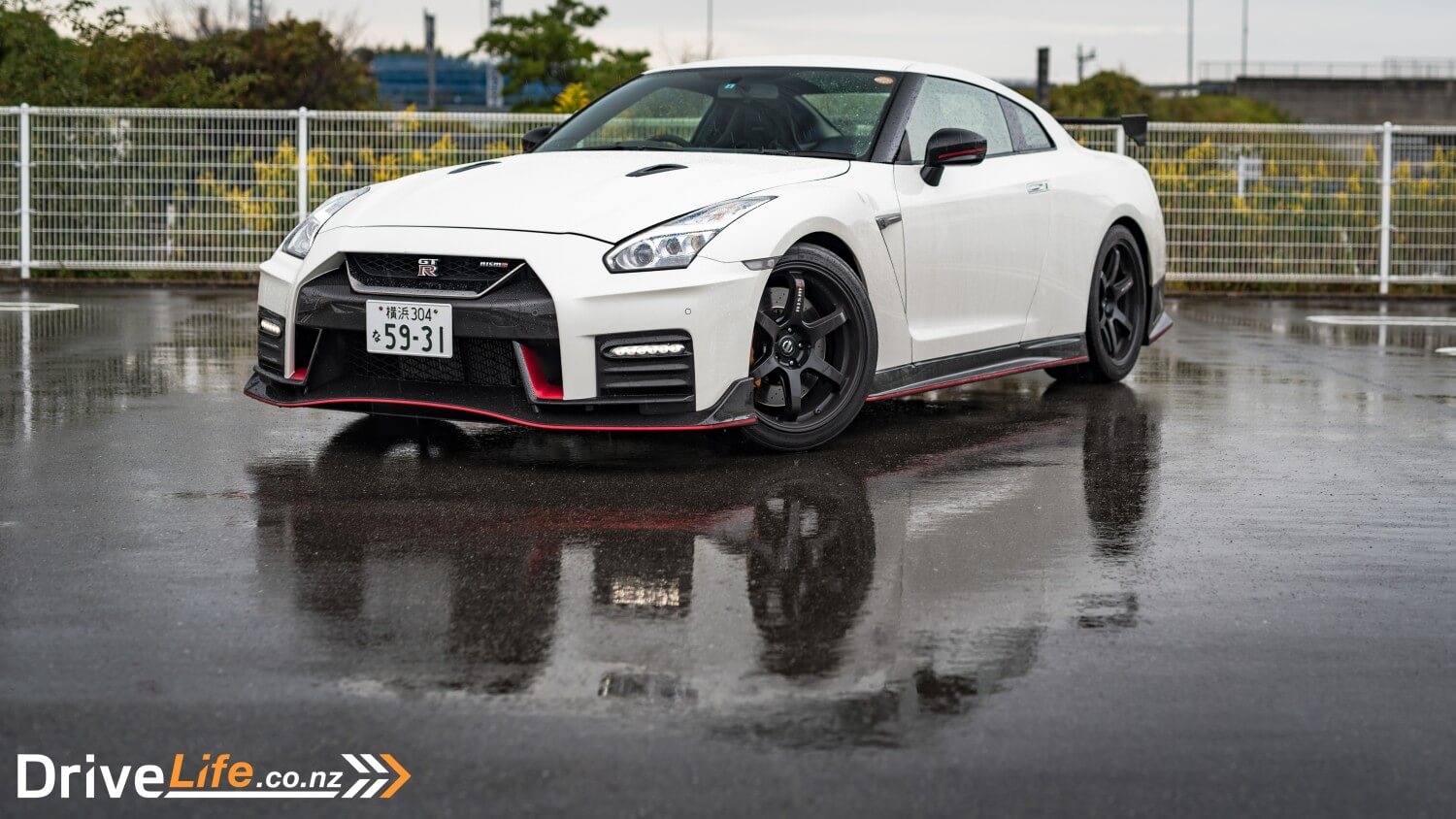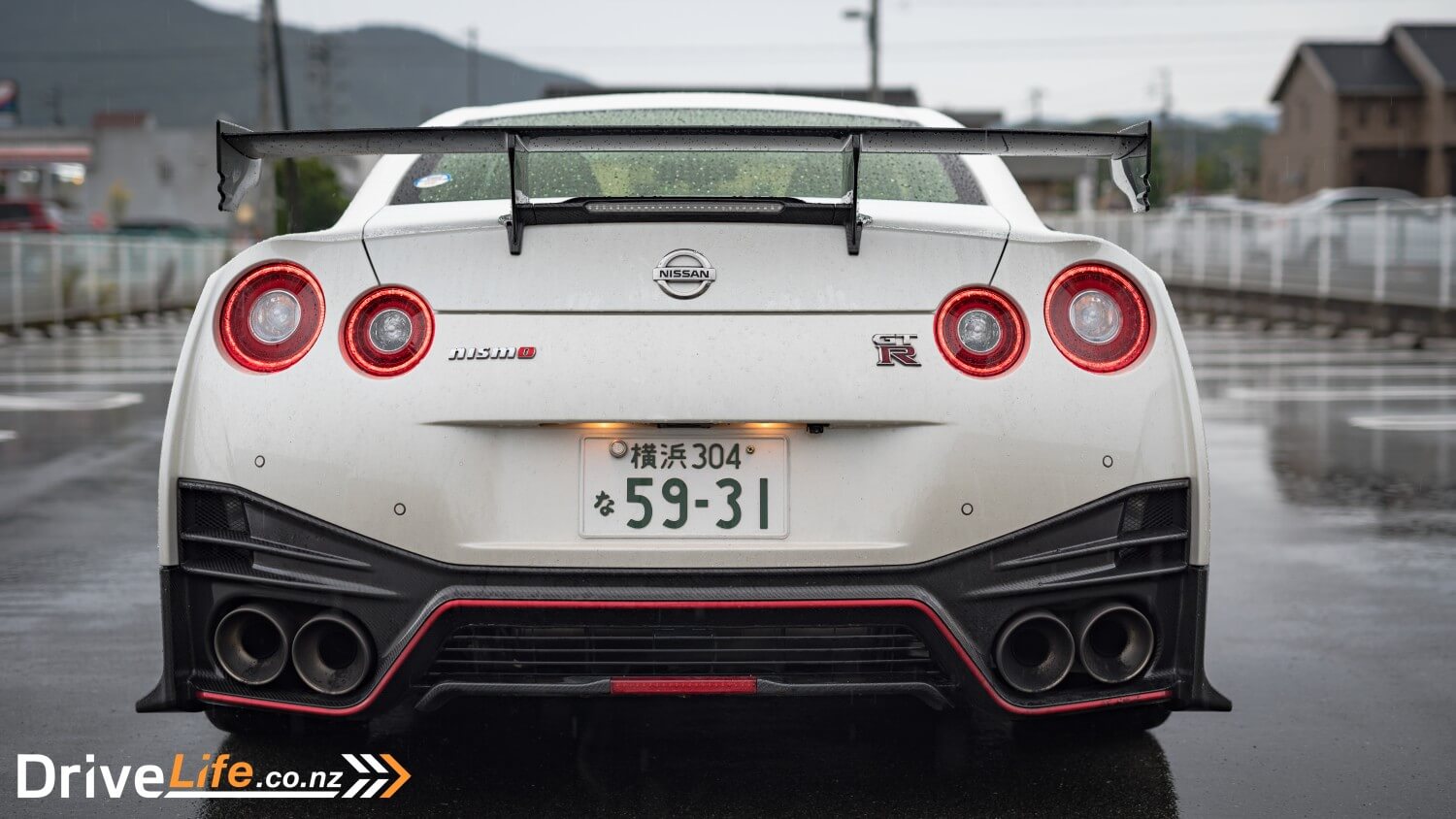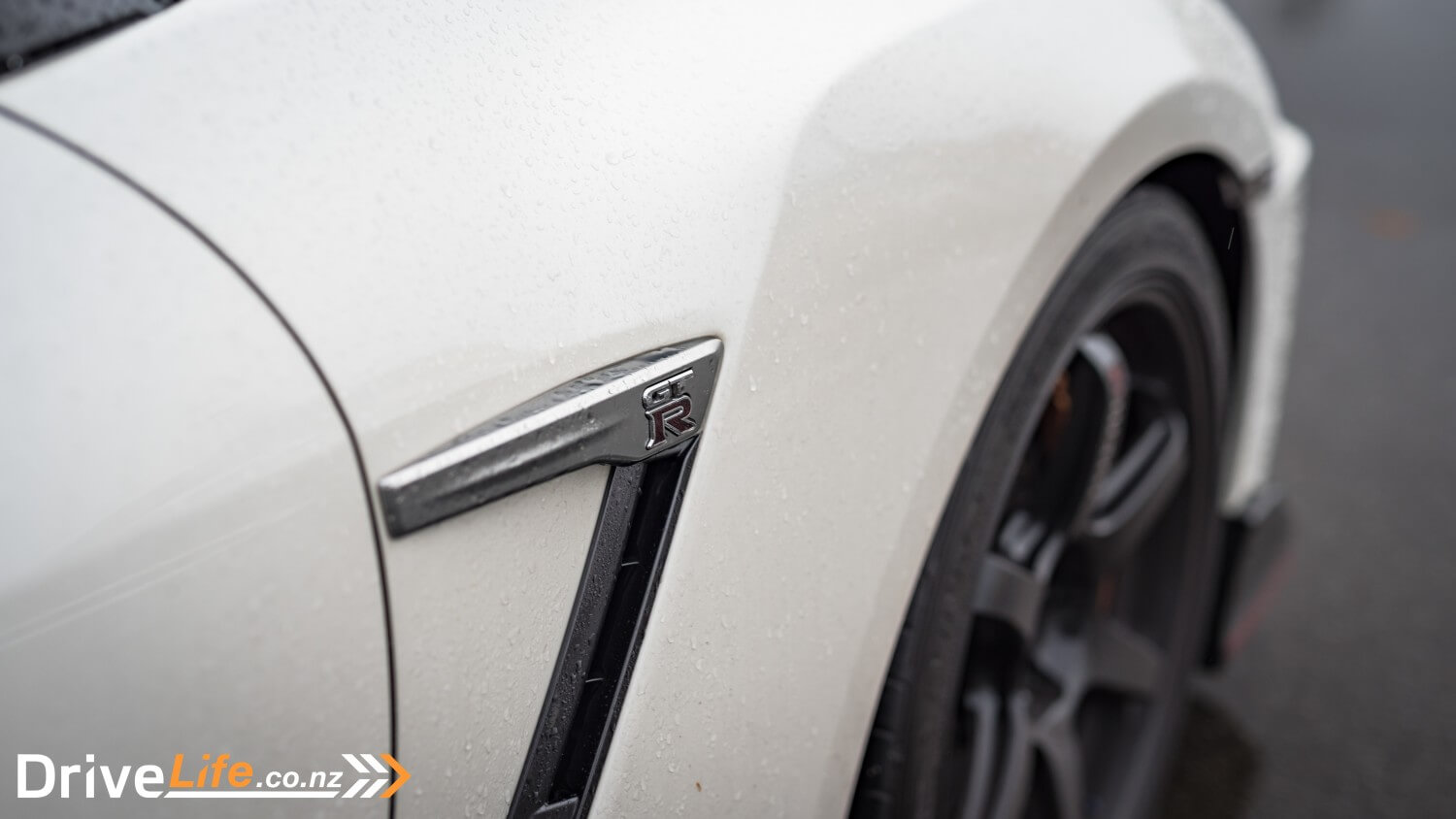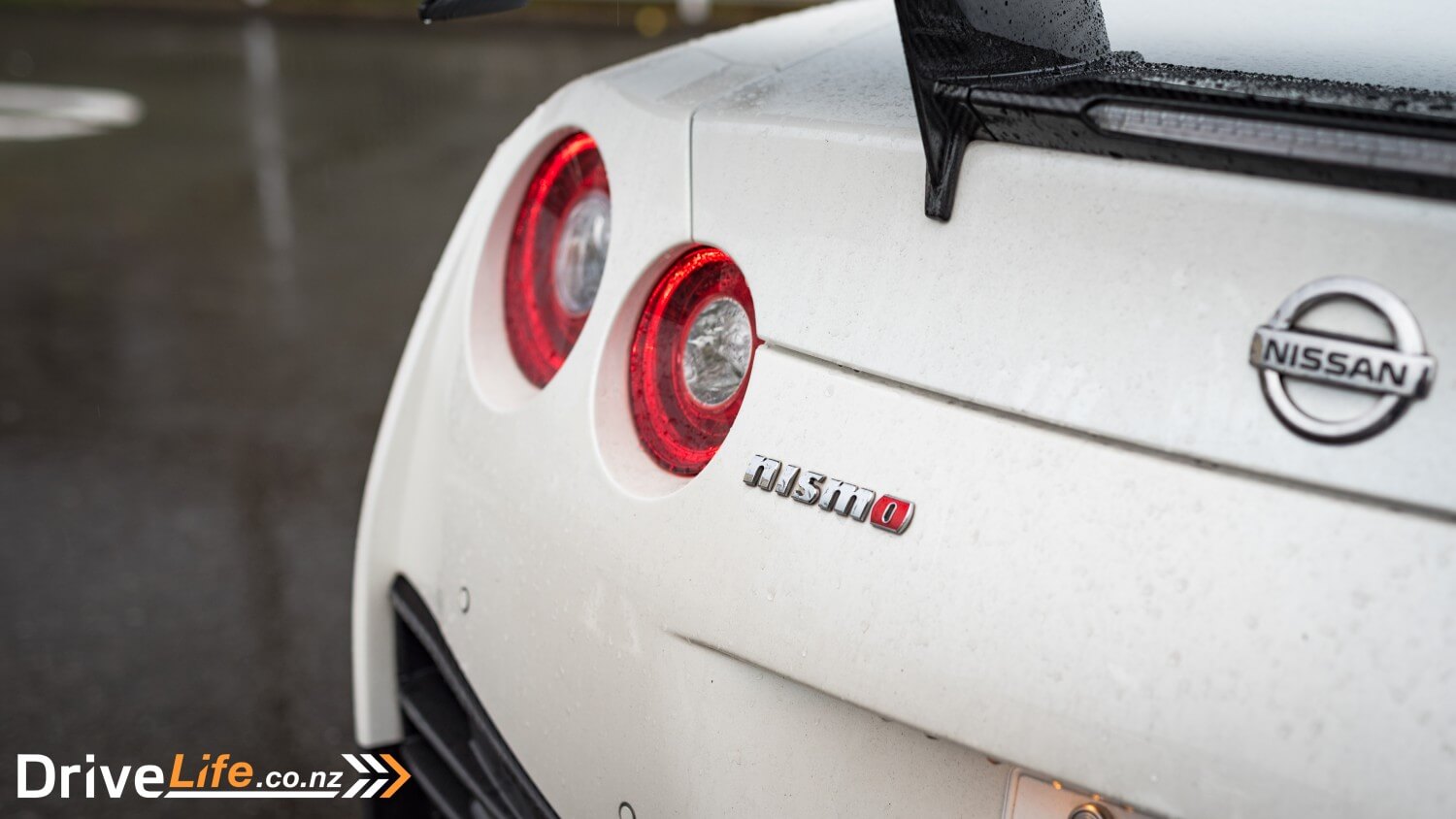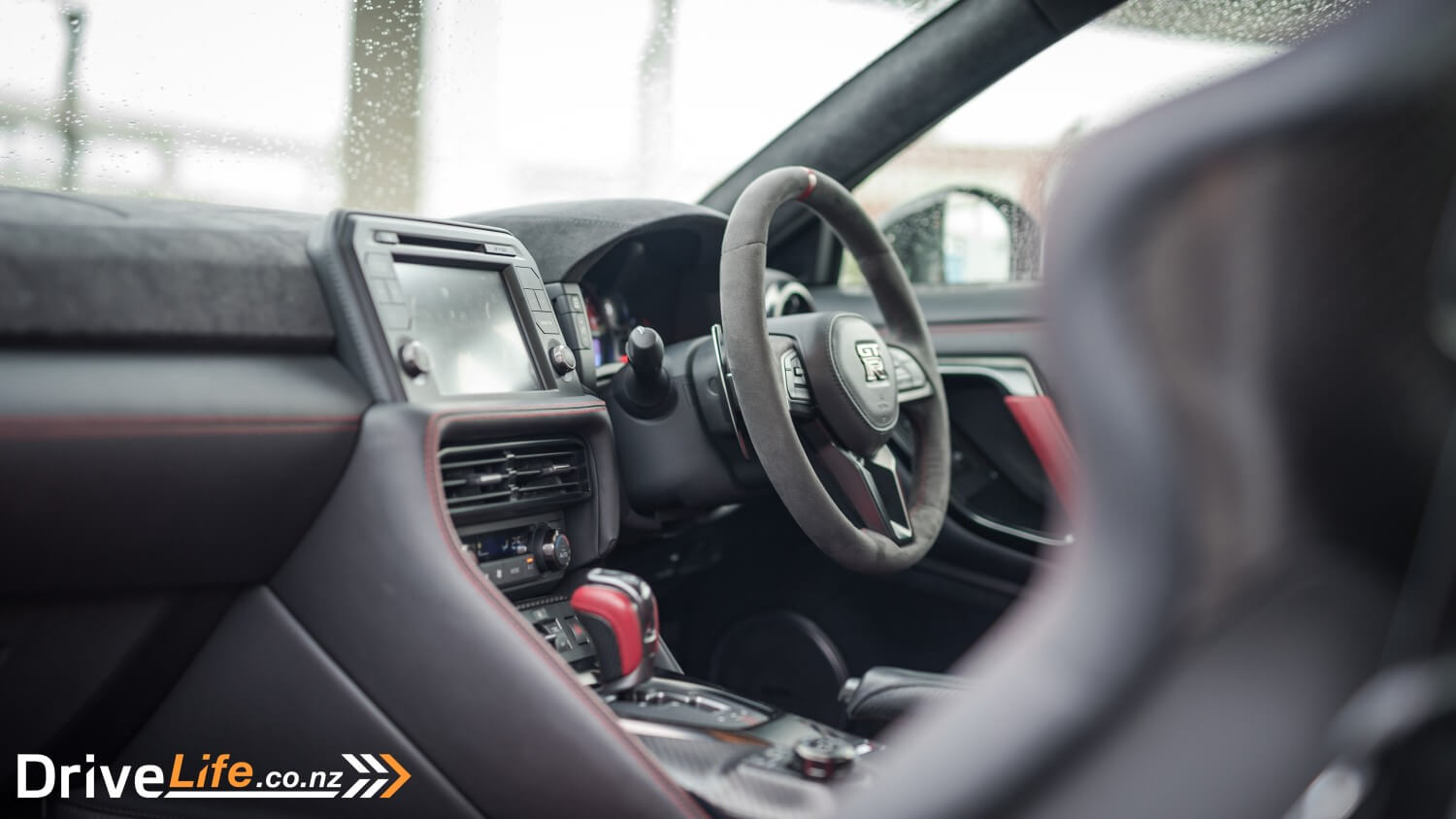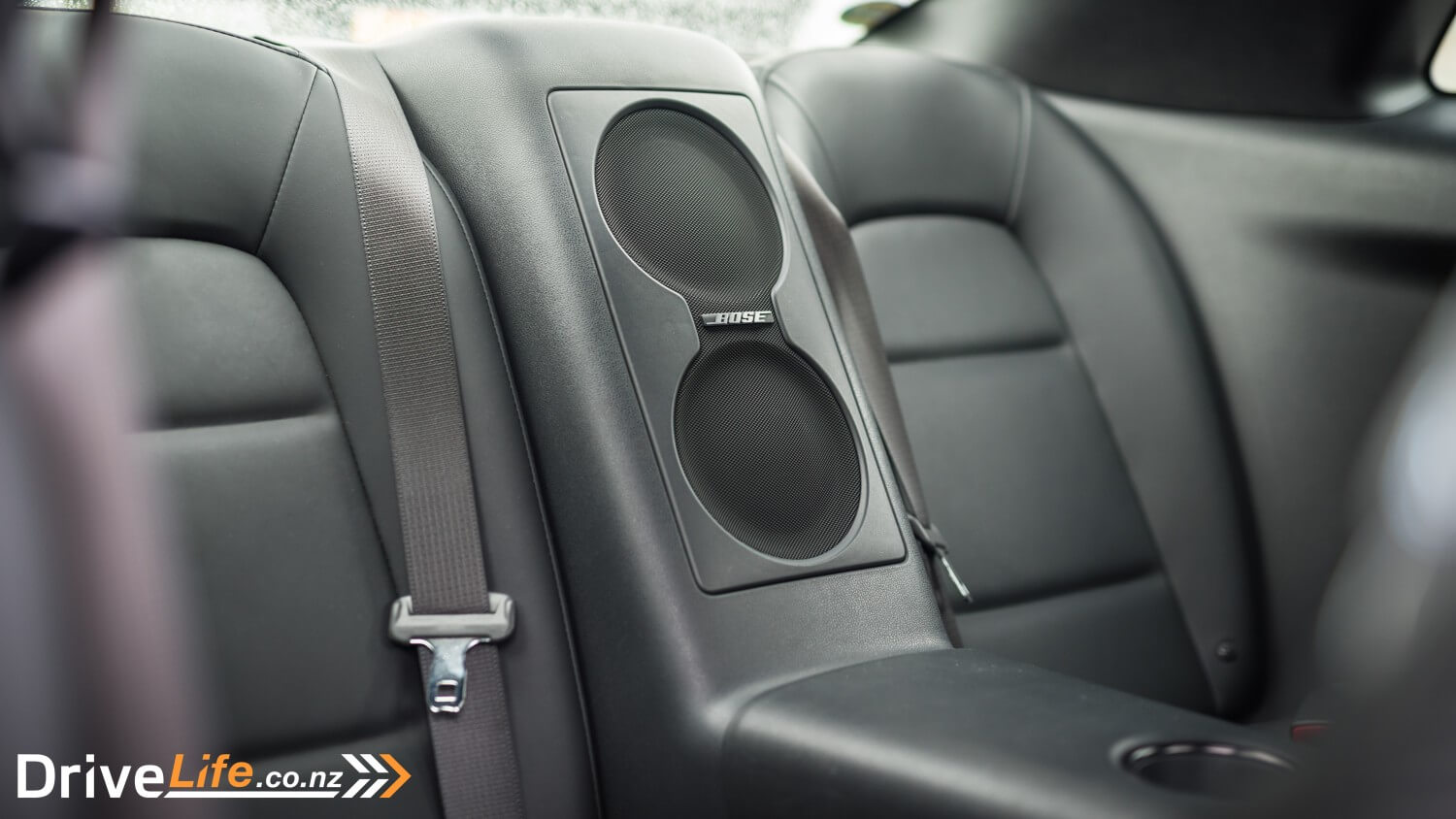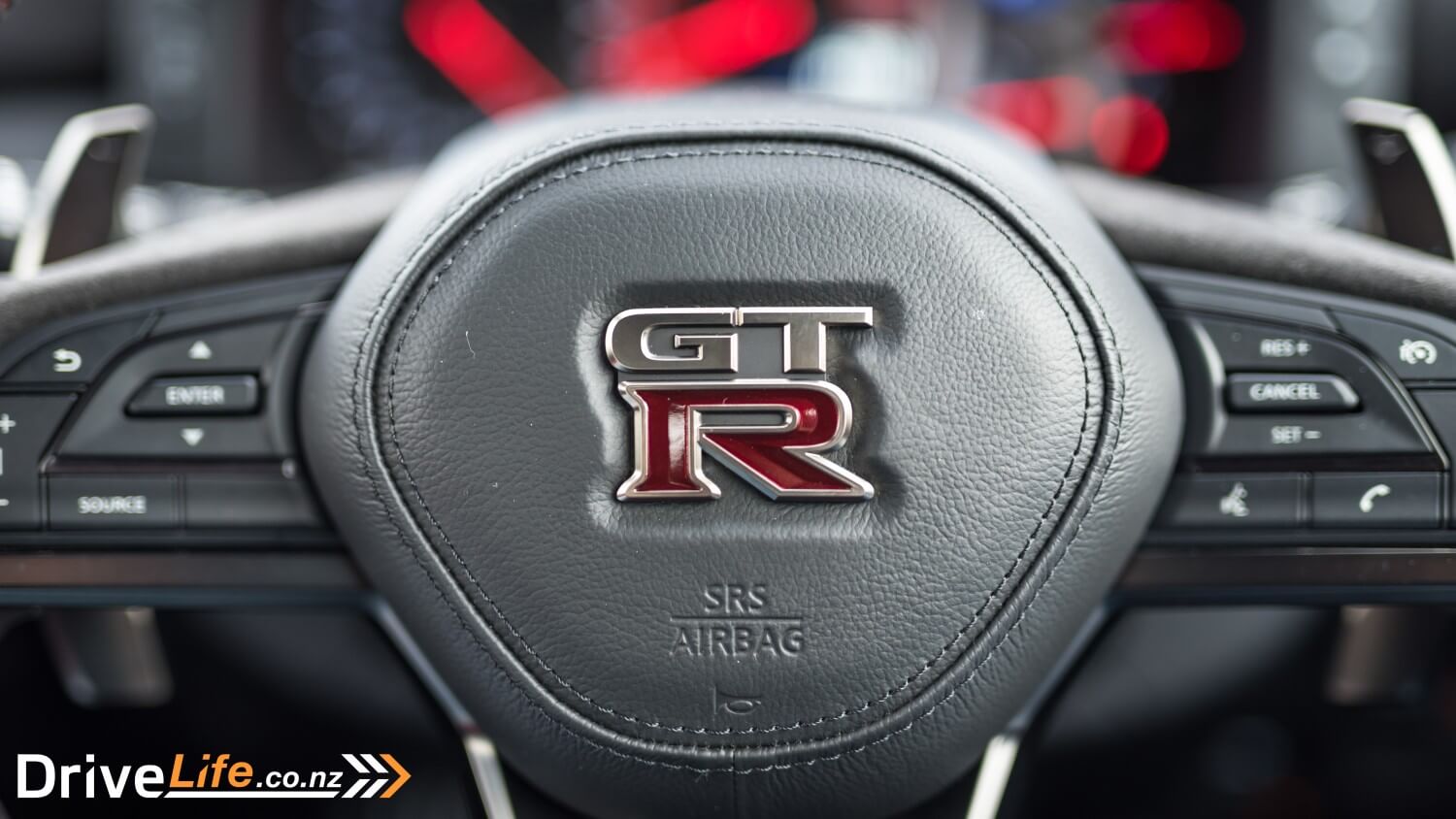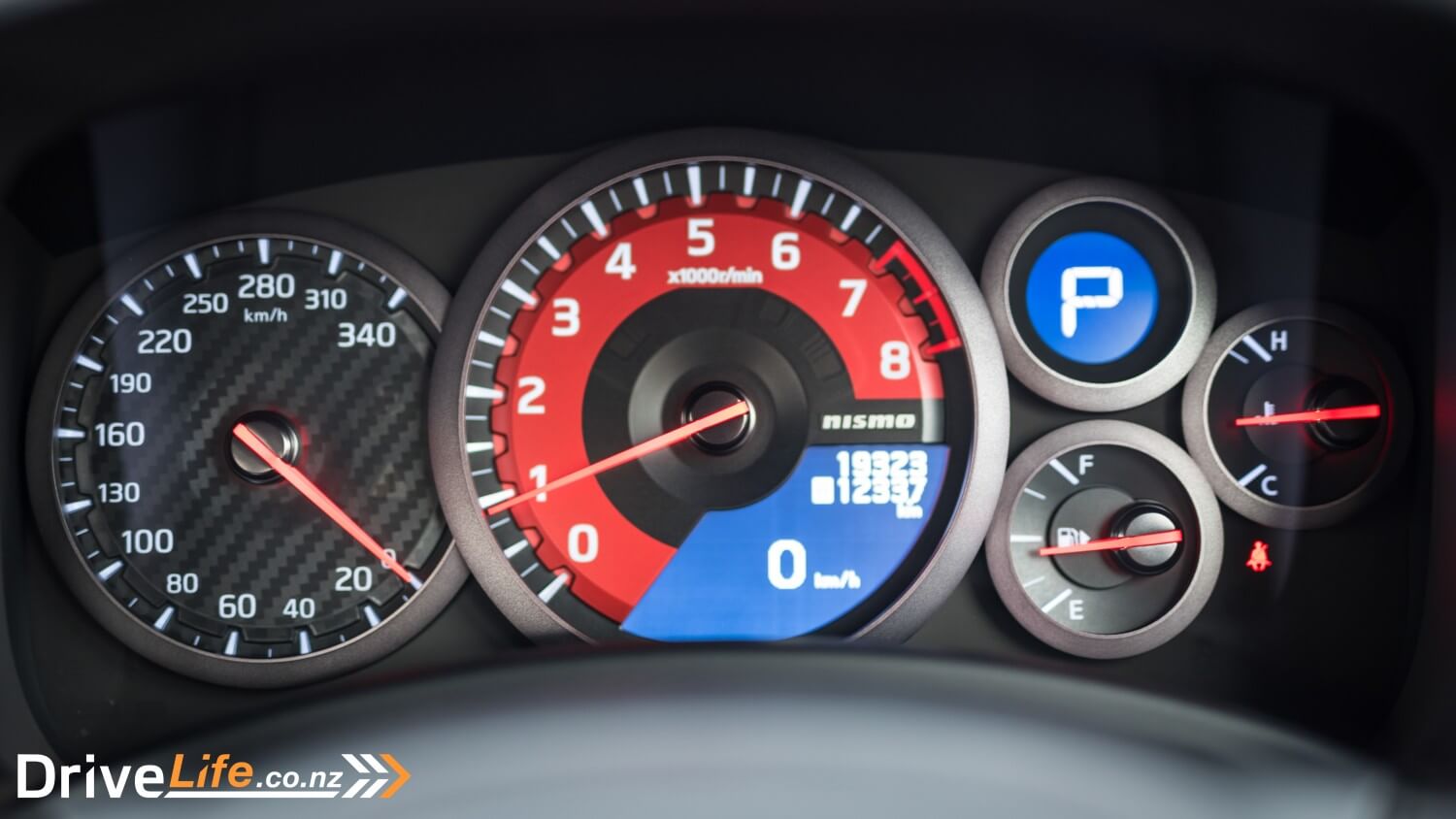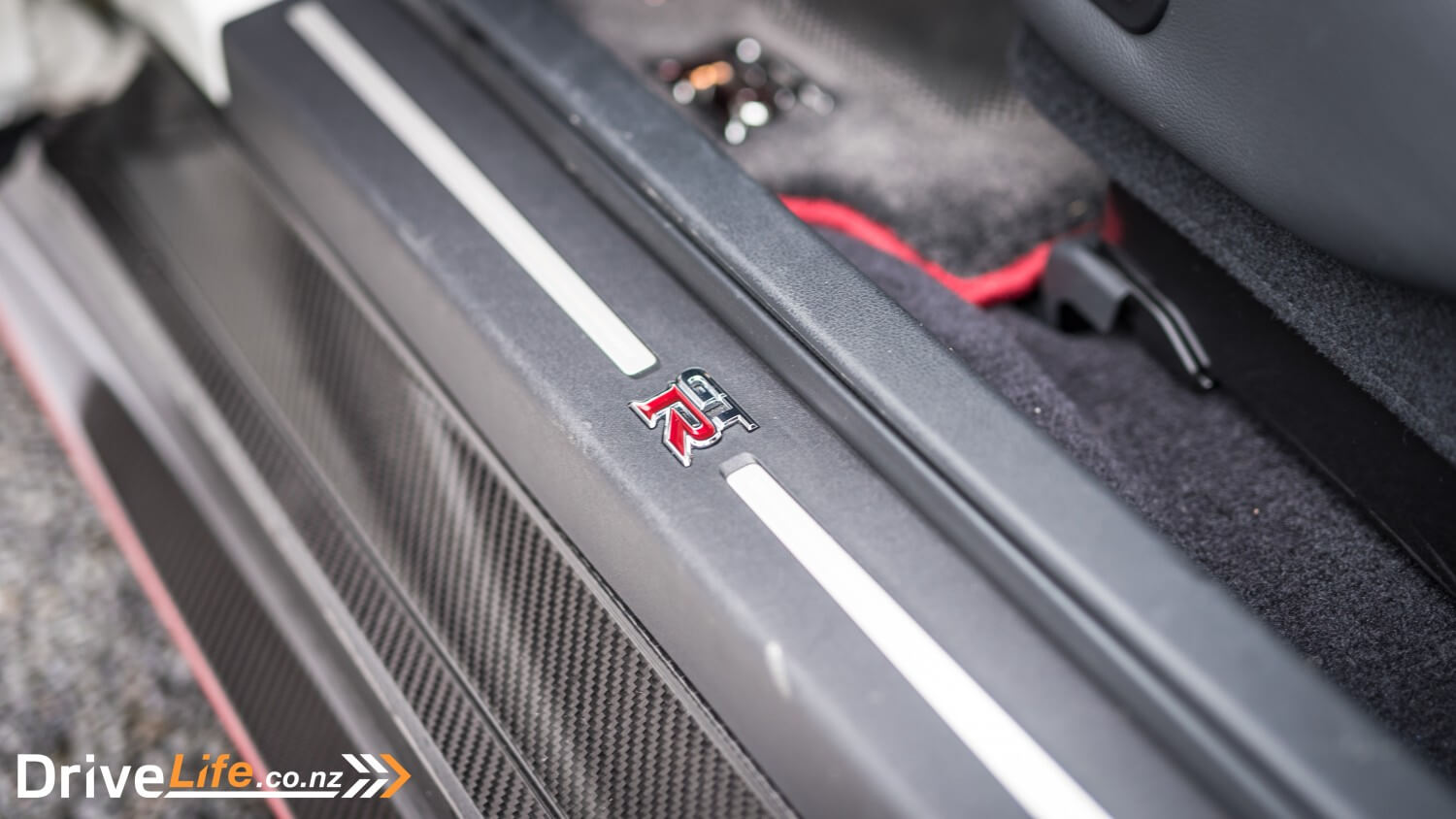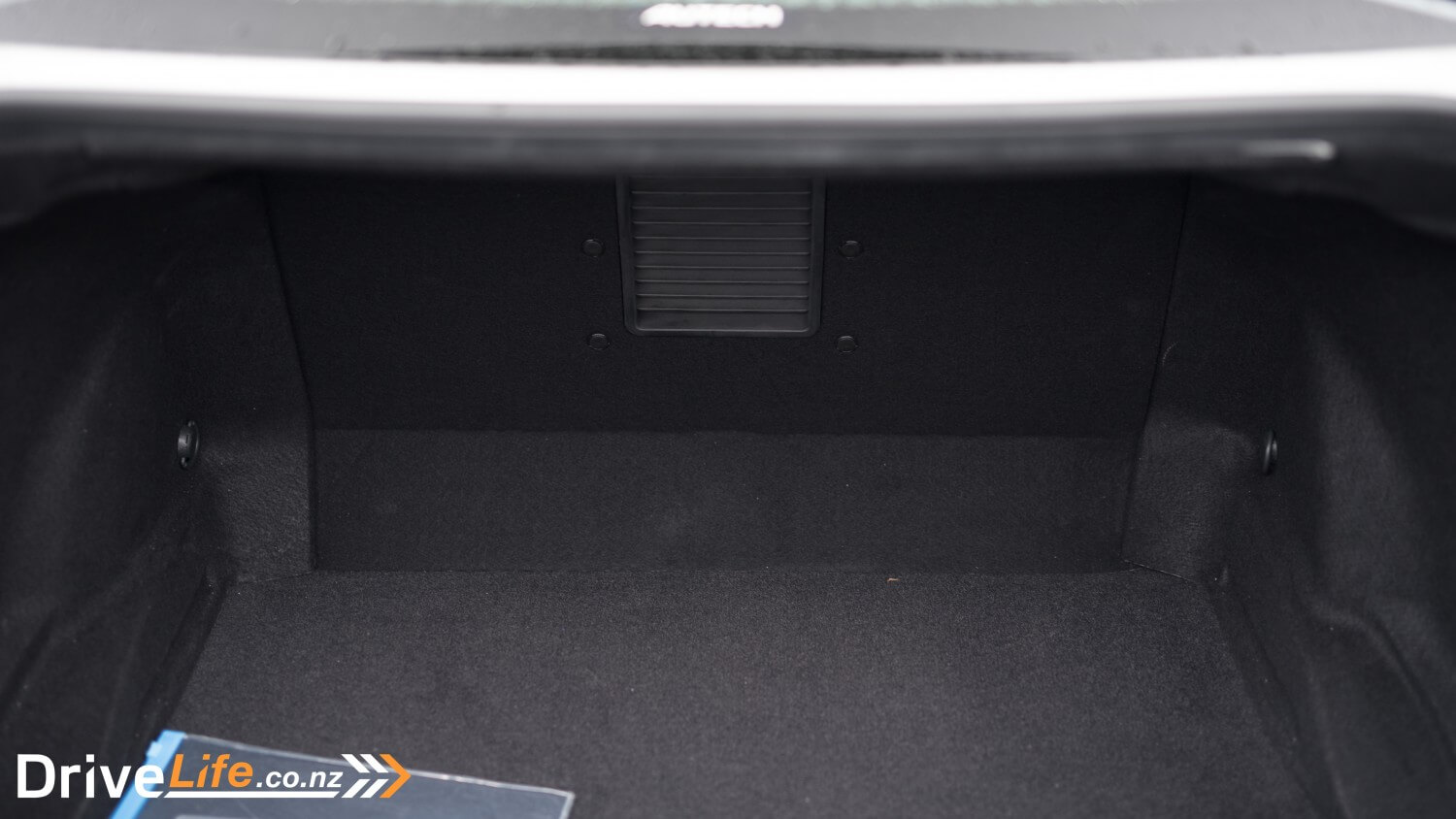The Nissan GT-R is the quintessential Japanese supercar. It’s one of the oldest supercars on sale at the moment – it’s still fundamentally a car that came out in 2007. Technology has moved on significantly since then. Think of the iPhone, which has gone through 10 generations in that time. The GT-R has only been through two major facelifts with tweaks every year to perfect it.
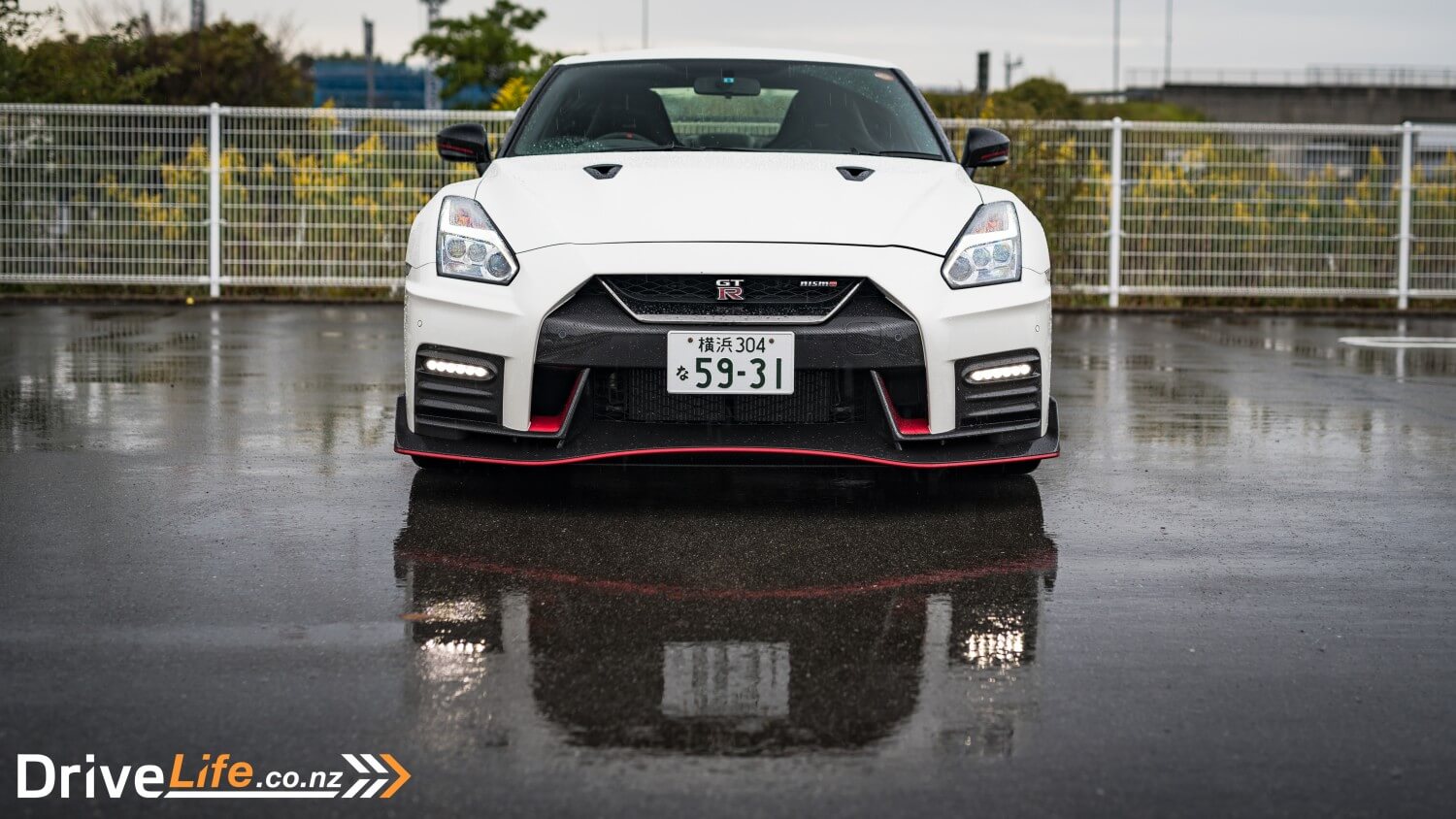
Hell, even the Porsche 911 went through a facelift, a new generation, and even a facelift of the new generation since the GT-R was first launched. However, there’s still this air of futurism and state-of-the-art technology surrounding it. Like Japan, it’s stuck in the past its glory days resting on its laurels while projecting an image of modernity. That’s not to say that’s a bad thing because there’s something wonderfully old school about this high tech machine.
Its most recent update was for the Model Year 2017 where it got some cosmetic upgrades, a bump in power for the base car, and most importantly, a revised interior. The NISMO version I’m testing is the fastest and most hardcore version, save for the ultra-rare N-Attack version.
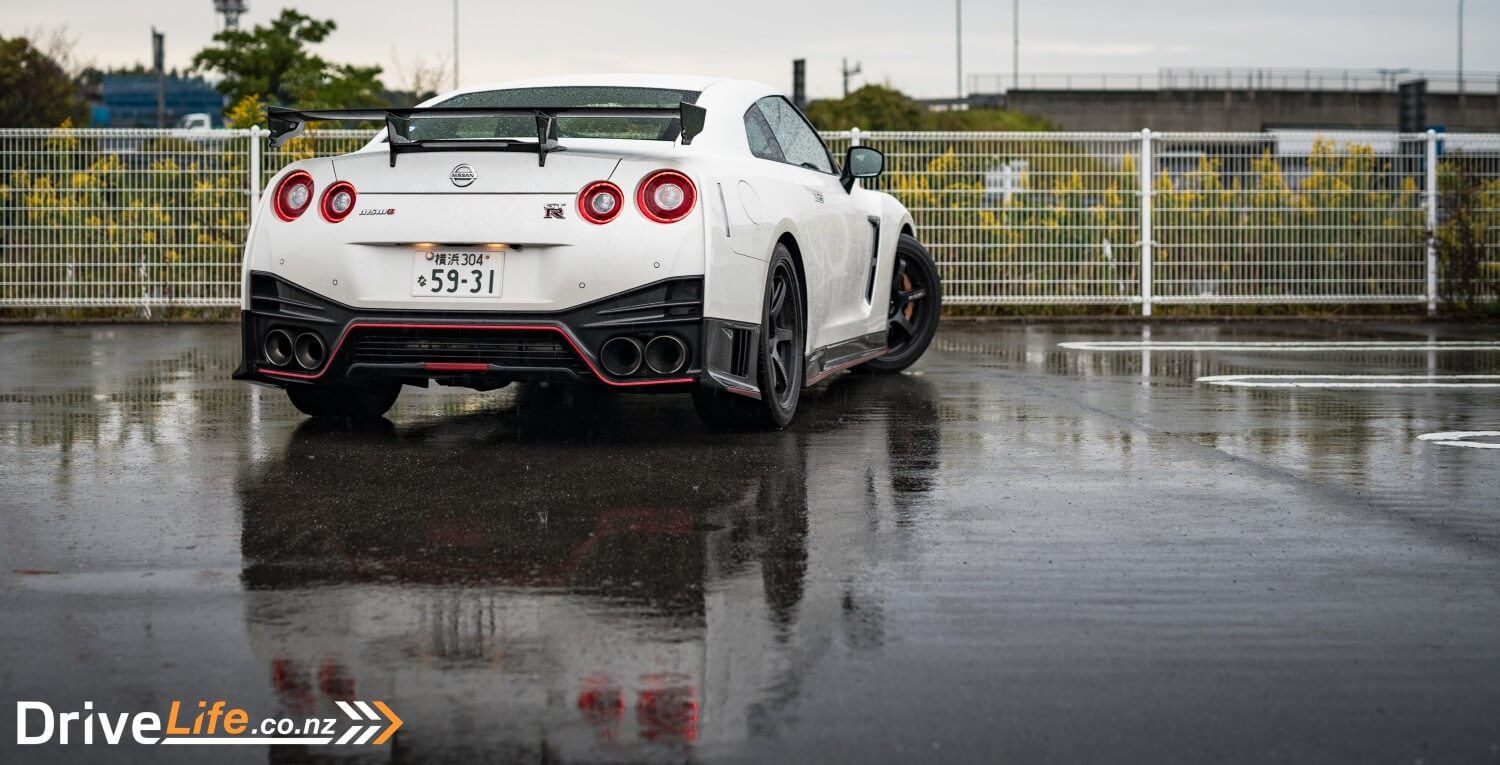
After John had one on a track last year, I took one on a 1000km road trip across to Japan to see if it’s every bit a grand tourer as its name suggests.
The Range
The GT-R range is fairly straightforward, it’s a lot easier to understand than the ever-complicated 911 range. There’s the bog-standard GT-R Premium Edition which starts off from a reasonable $205,000. The GT-R Premium Edition with Luxury Trim bumps that up to $211,000.
Once you start adding NISMO stuff the price goes up to $240,000 for the Track Edition Engineered By NISMO. All the GT-Rs up to here are powered by the same 3.8-litre twin-turbo V6 that we’re now familiar with. For 2017, power has been upped to a respectable 419kW and 622NM.
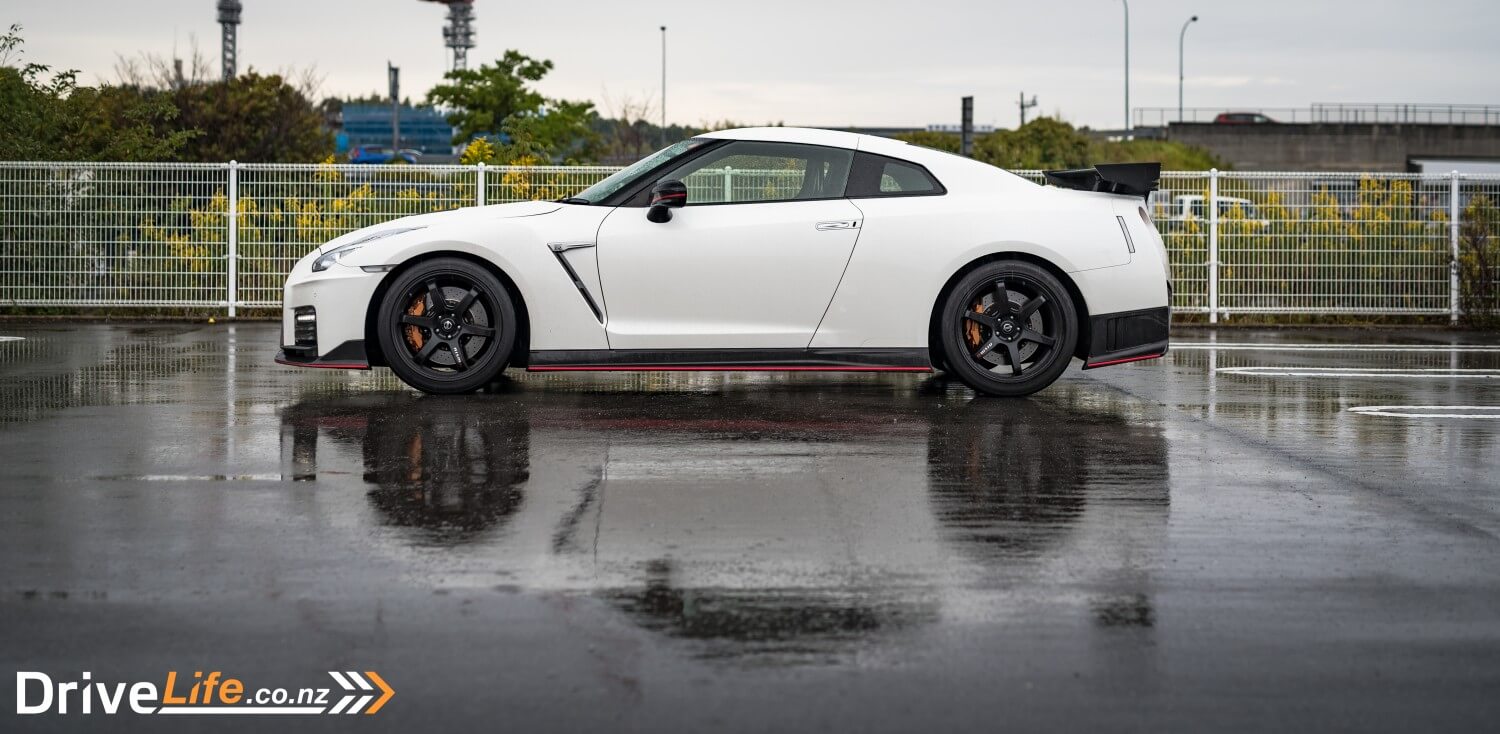
Step up to the big daddy NISMO, for $308,000, and you get an extra 22kW and 30NM bringing it to 441kW and 652NM. While that doesn’t sound particularly like headline figures and certainly not worth the extra coin, you do get some other racy goodies.
There’s a Formula One-grade titanium exhaust system, which does wonders for the noise, NISMO-tuned suspension, 20-inch 6-spoke RAYS forged wheels (a must), a lot of carbon fibre aero bits, and lashings of alcantara inside. The alcantara steering wheel and Recaro bucket seats in particular are worth the price premium alone; they’re simply some of the best in the business.
First Impressions
It doesn’t matter what you think of the GT-R, this thing commands presence. You look at it and there’s a lot of car. It’s a bulky, muscular, beast of a thing. The 2017 facelift has made it even more aggressive too. The sharper lines on the bonnet, large grille and intakes, coupled with the carbon fibre splitter give this a very angry anime face.
At the rear the diffuser, quad-exhausts, and skyline high rear wing will be a sight other motorists will be used to seeing. I wouldn’t call this a particularly beautiful car but there’s purpose to all the styling elements. This car is all about going as fast as possible without compromises. It’s not here to win beauty pageants – it’s not Italian after all.
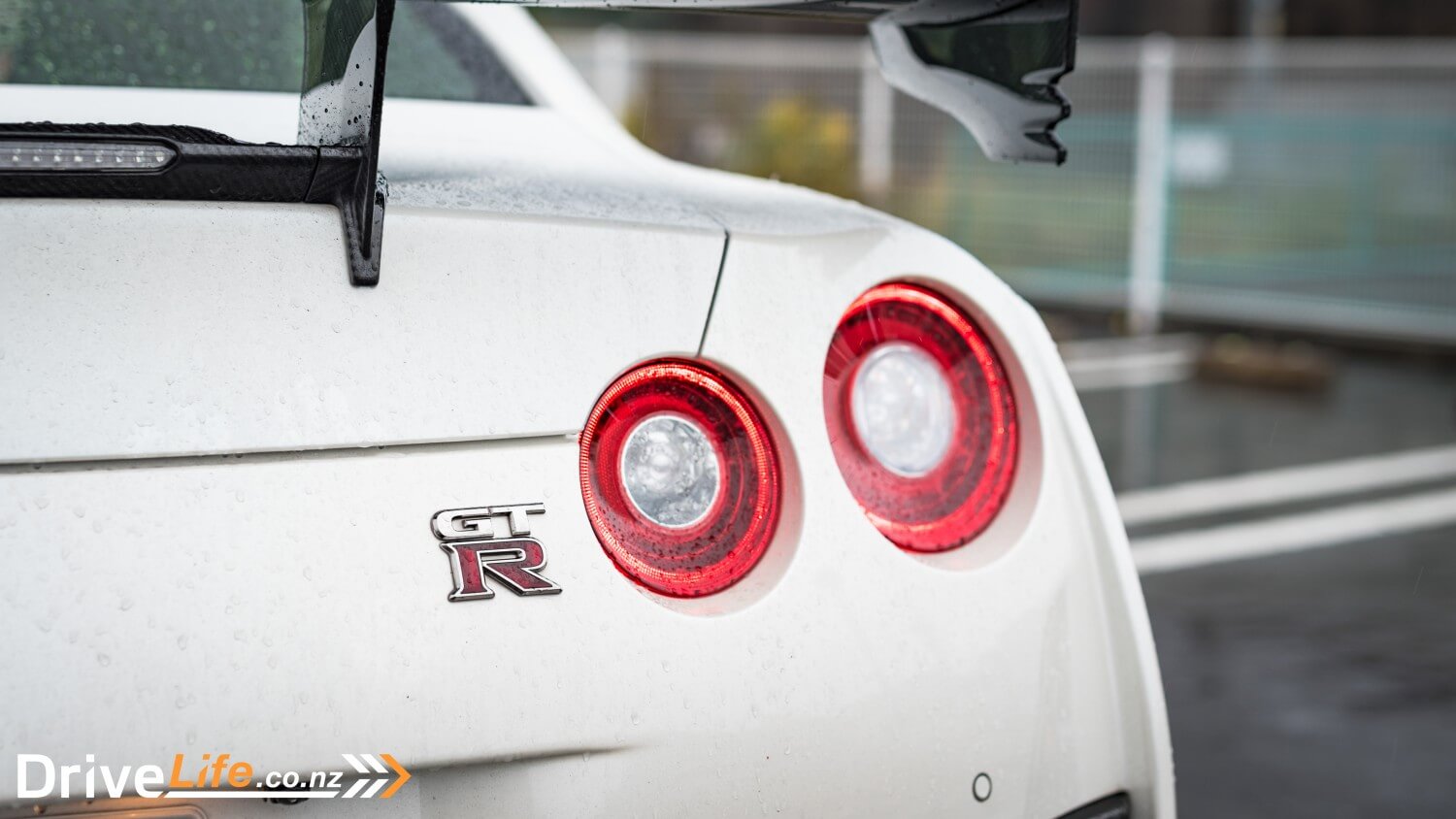
However, even though we’ve become accustomed to this generation GT-R for over a decade, this NISMO is by far the best looking R35 yet. Despite its age and familiarity it was still able to turn many heads and attract several camera phones in Tokyo. It does attract some bad attention too, particularly from other motorists wanting to race you. That might get annoying very quickly.
The Inside
Here’s where the MY2017 update for the GT-R is most noticeable. The new interior is much, much, much better than the aging interior of the original R35 GT-R. While the NISMO is swathed in alcantara, the standard car has lashings of lovely leather around the cabin.
Not that there’s a problem with having too much alcantara. The new steering wheel and Recaro buckets that are bespoke to the NISMO version are much more comfortable than they appear. I was expecting my back to be sore and aching at the end of my time with this but that couldn’t be further from the truth. This is a totally usable daily driver.
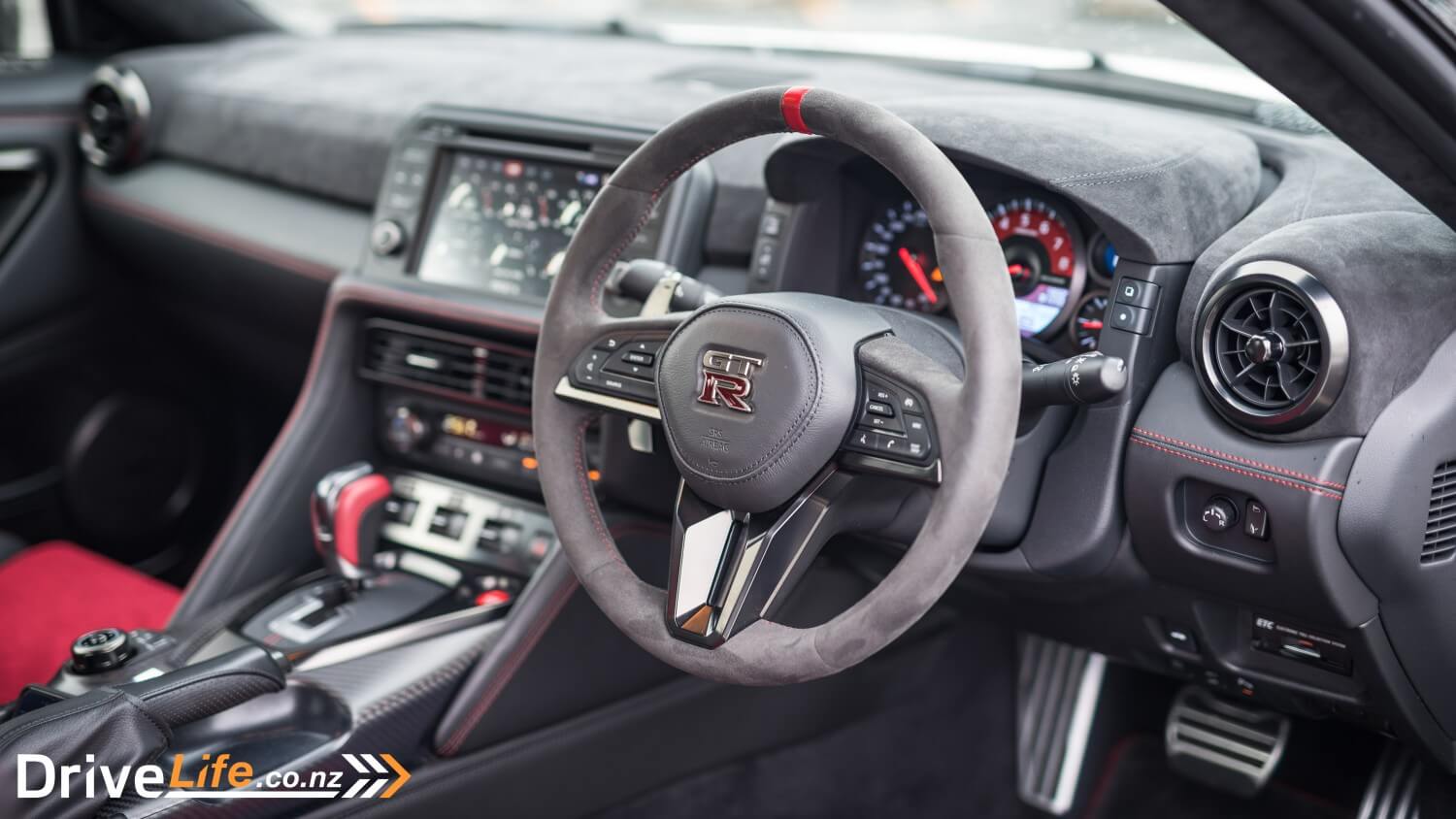
Then there’s the new 8-inch touchscreen. It’s so much better to use than the previous screen, being sharper, brighter, and more responsive than ever before. The sat-nav is better too, though my test car in Japan still only had a Japanese speaking sat-nav. Luckily I was able to understand it more than the last time I drove a GT-R.
Nissan have also carried over the fantastically childish and gimmicky sports readouts for the screen. Developed by Polyphony, the brains behind the Gran Turismo series, having these displayed on the 8-inch screen while you’re driving does feel like you’re in a real life version of the video game. I’ll be the first to admit it was a lot of fun to play with, especially the g-meters.
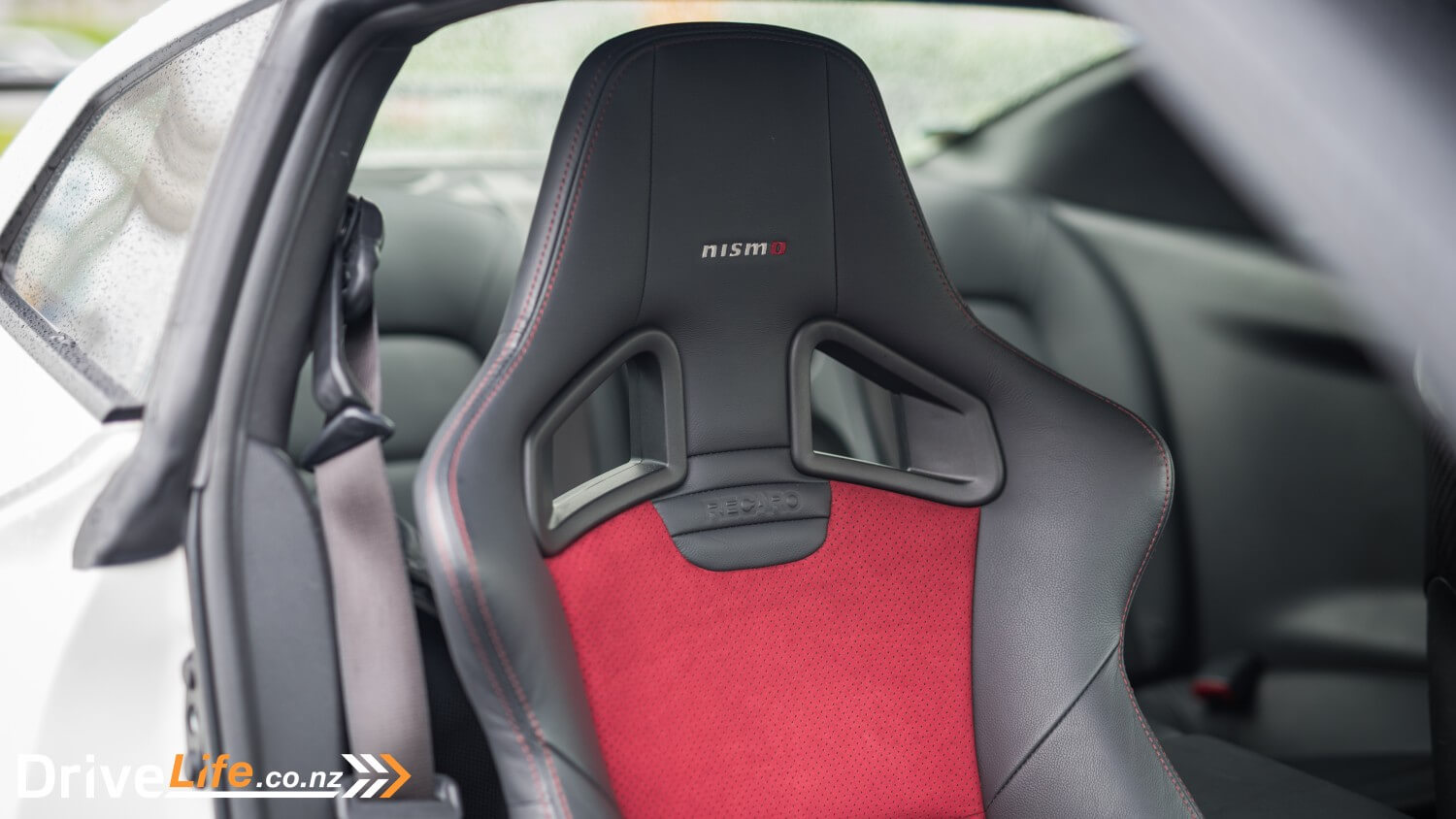
It can do the practical stuff too. There’s enough cup holders to keep you hydrated on a long journey, lots of plugs to keep phones charged, and a Bose surround sound system to keep you entertained. The space in rear seats is usable for human adults too and the boot has more than enough space for a weekend getaway. It certainly has enough for a weekly shop.
While the interior has progressed over the previous generation, it’s still not quite on par with rivals in feel. The build quality is good but it just doesn’t feel special enough inside, especially if one is paying upwards of $300,000 for the privilege of sitting in here. Of course, the NISMO makes up for that by feeling special in other areas, mainly the driving experience.
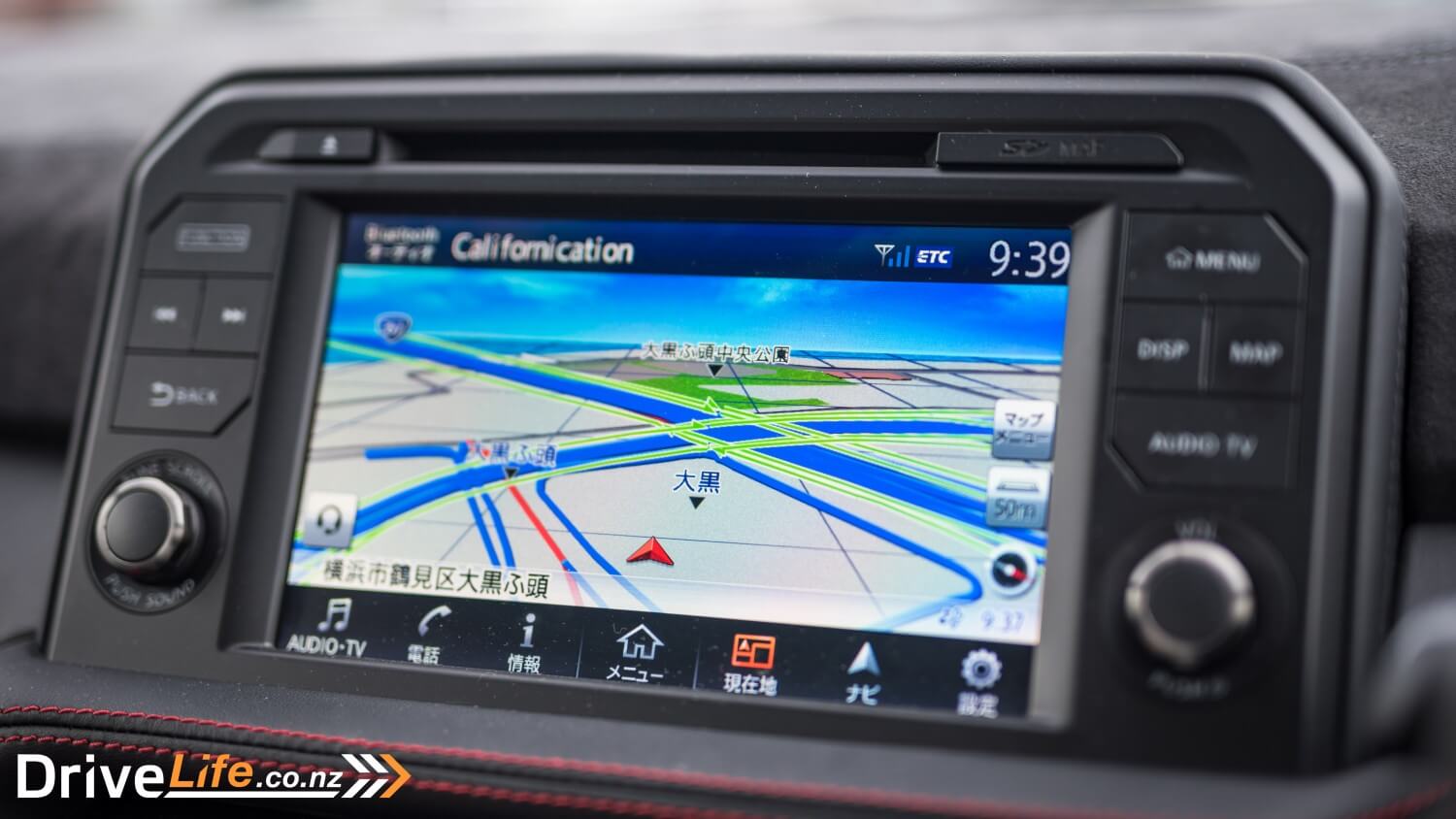
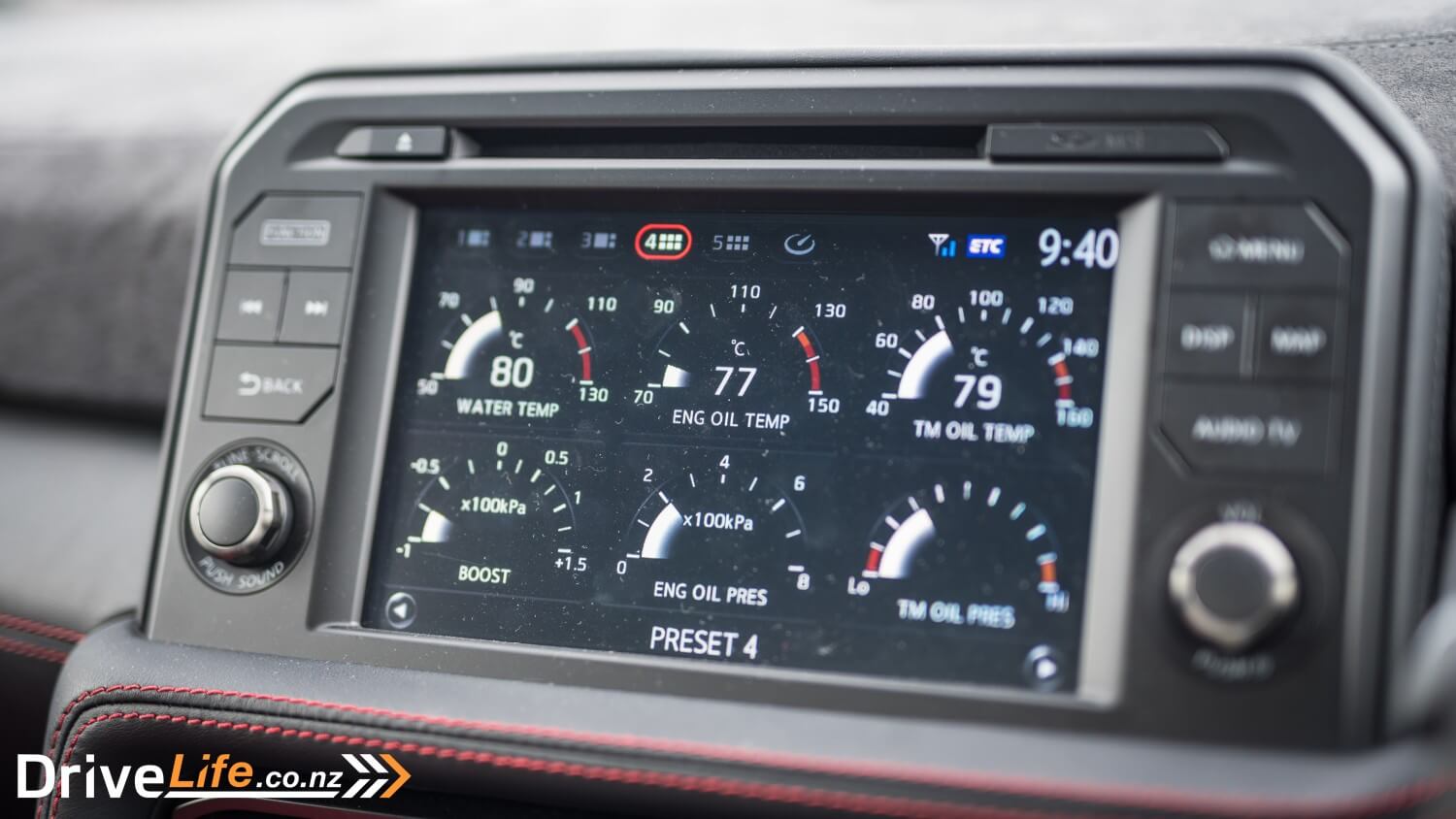
The Drive
Nothing else drives quite like a GT-R. It’s hard to explain but there’s no other experience quite like it. On paper the tweaks may seem minor but in the real world the differences between the NISMO and ‘standard’ GT-R are worlds apart.
If you want to buy a standard GT-R, go for it. Just don’t test drive a NISMO as well because there’s no going back from this. It’s an exceptionally phenomenal piece of engineering. A car this big with this much mass should not be able to accelerate as quickly as it does.
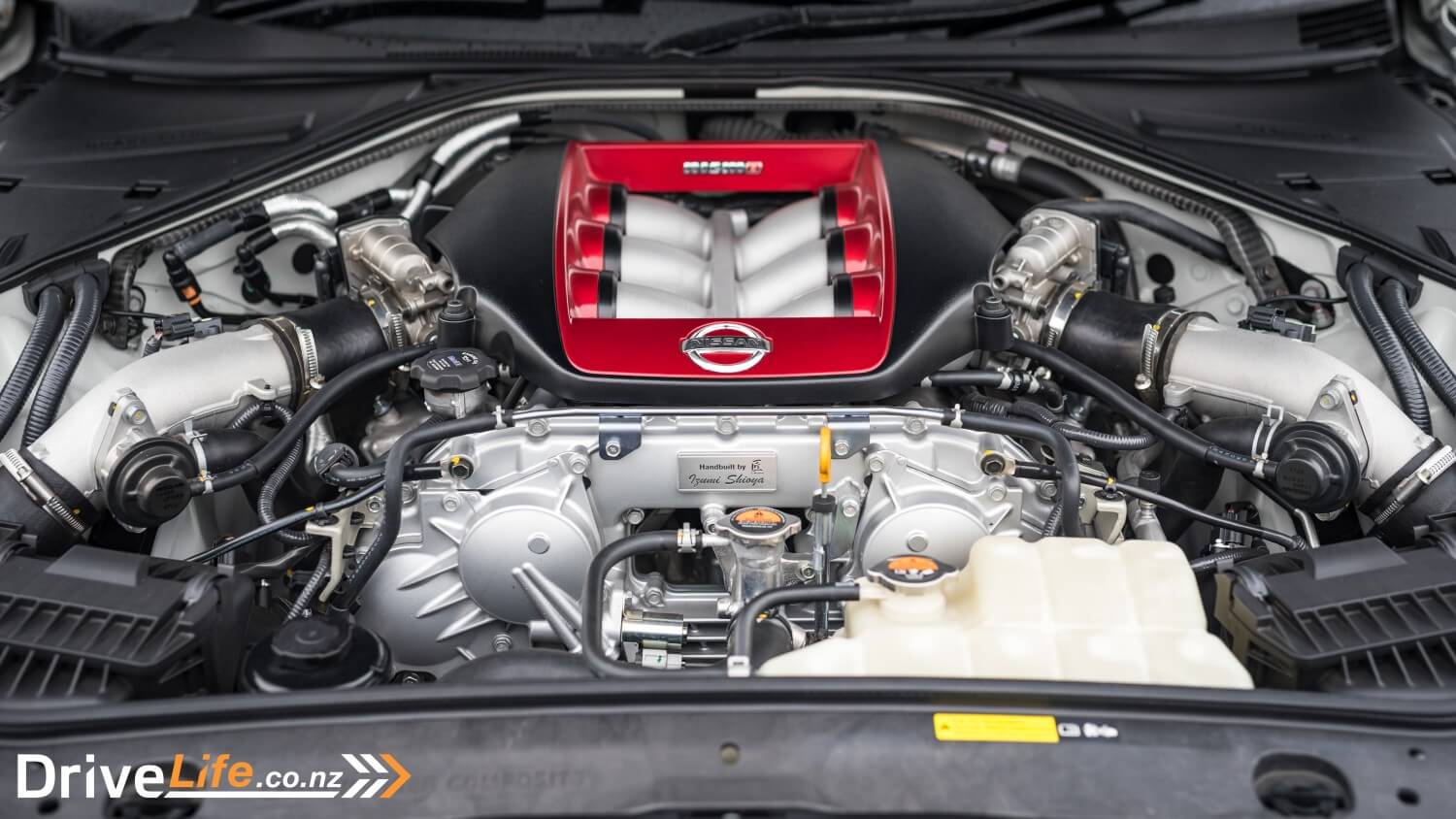
Nissan quotes a 0-100 km/h of 2.9 seconds and I don’t doubt that at all, with 441kW and 652NM of torque on tap. While I didn’t time the few launch control experiments I did, I can certainly attest to the sheer ferocity of the way this thing gets off the line. There’s no drama, no wheel spin. Just a savage kick in the head. Blink and you’re over the legal speed limit.
It’s not just fast off the line, the way this thing picks up speed is fantastically addictive. This engine just pulls and pulls like there’s no tomorrow. Drop down a couple of gears, give the right pedal a bit of encouragement and it slingshots to the horizon. Left in auto, there’s initial lag but once it gets going past 3000rpm you’ll be glad you’ve got 390mm Brembo brakes as standard. Oddly enough carbon ceramics aren’t fitted as standard, which is shocking for a $300,000 supercar.
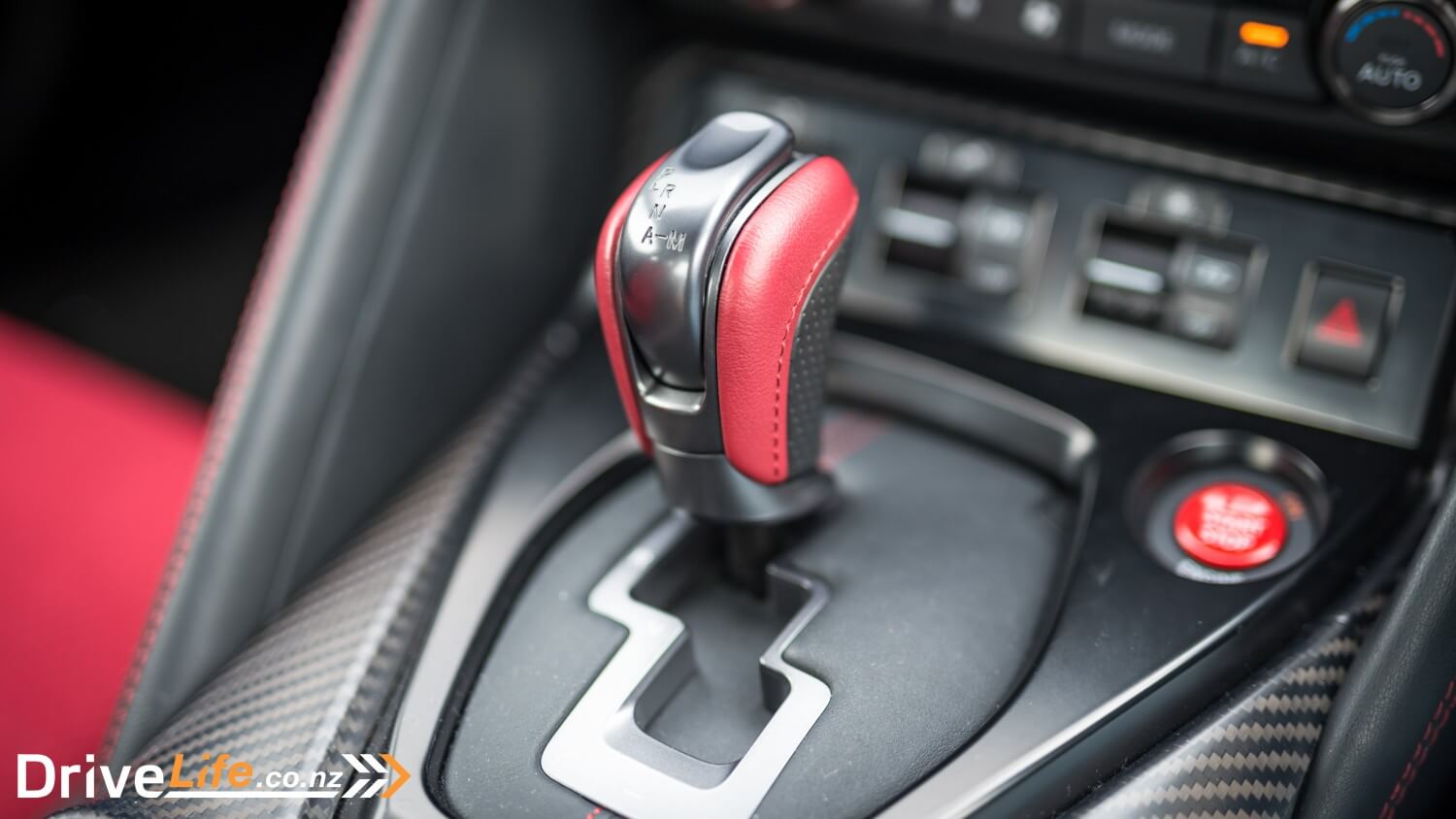
For the 2017 update Nissan has refined the GT-R and made the suspension and damping slightly softer. The upside is it’s a lot easier to live with compared to the MY2015 car I drove previously. Fret not as they’ve increased body rigidity so it’s still as stiff as it needs to be. The 6-speed dual clutch is much smoother both at low speeds and when you’re hammering it on a mountain road. You can still feel like clunk around in town but I like that, it’s part of the GT-R experience.
Speaking of mountain roads, on the 1000km trip I took this on there were some fantastic roads which this thing just devoured. It ate up corner after corner without so much as breaking a sweat. The steering is hydraulic so it felt absolutely wonderful. The feedback from the steering was refreshingly old school. This car gives you confidence at speed, something few cars with this much power can do.
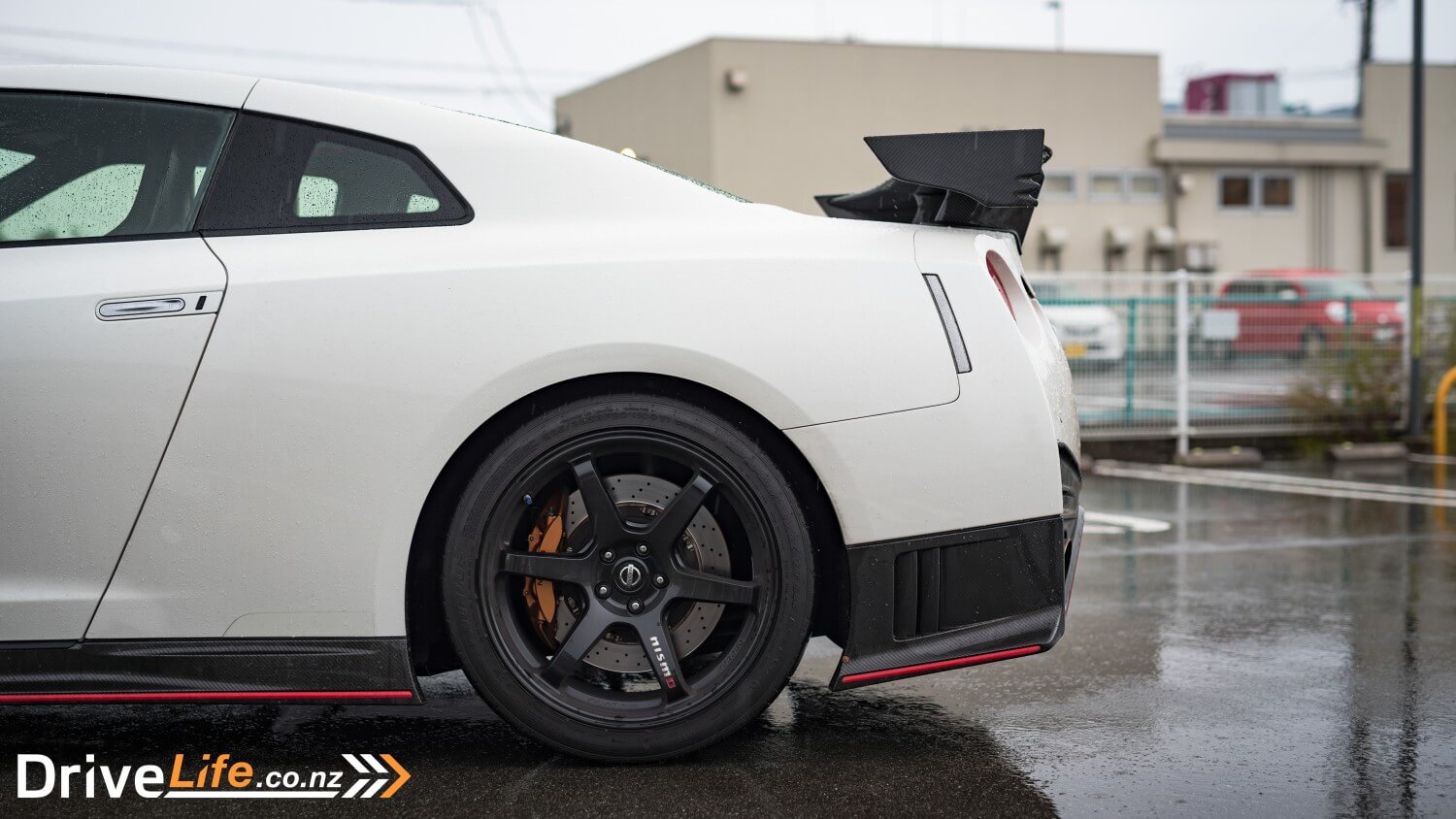
It eggs you to push it and yourself to the limit with the knowledge the electronics will be there in case you stuff it up. But you’d have to be a complete moron to stuff it up because this thing just grips and grips. I have never driven a car that’s more planted to the road than this. It didn’t feel like the car was wearing Dunlop SP Sport Maxx GT 600 DSST CTT, it felt like it was on velcro. On any road surface the NISMO will put its power down no matter what.
Regardless of how much I tried to irritate it the GT-R would not let go. Rain or shine few cars will be able to keep up with this on just about any road you throw at it. Every time I drove this car hard I could come out with a silly grin and great admiration for the car and people who engineered it.
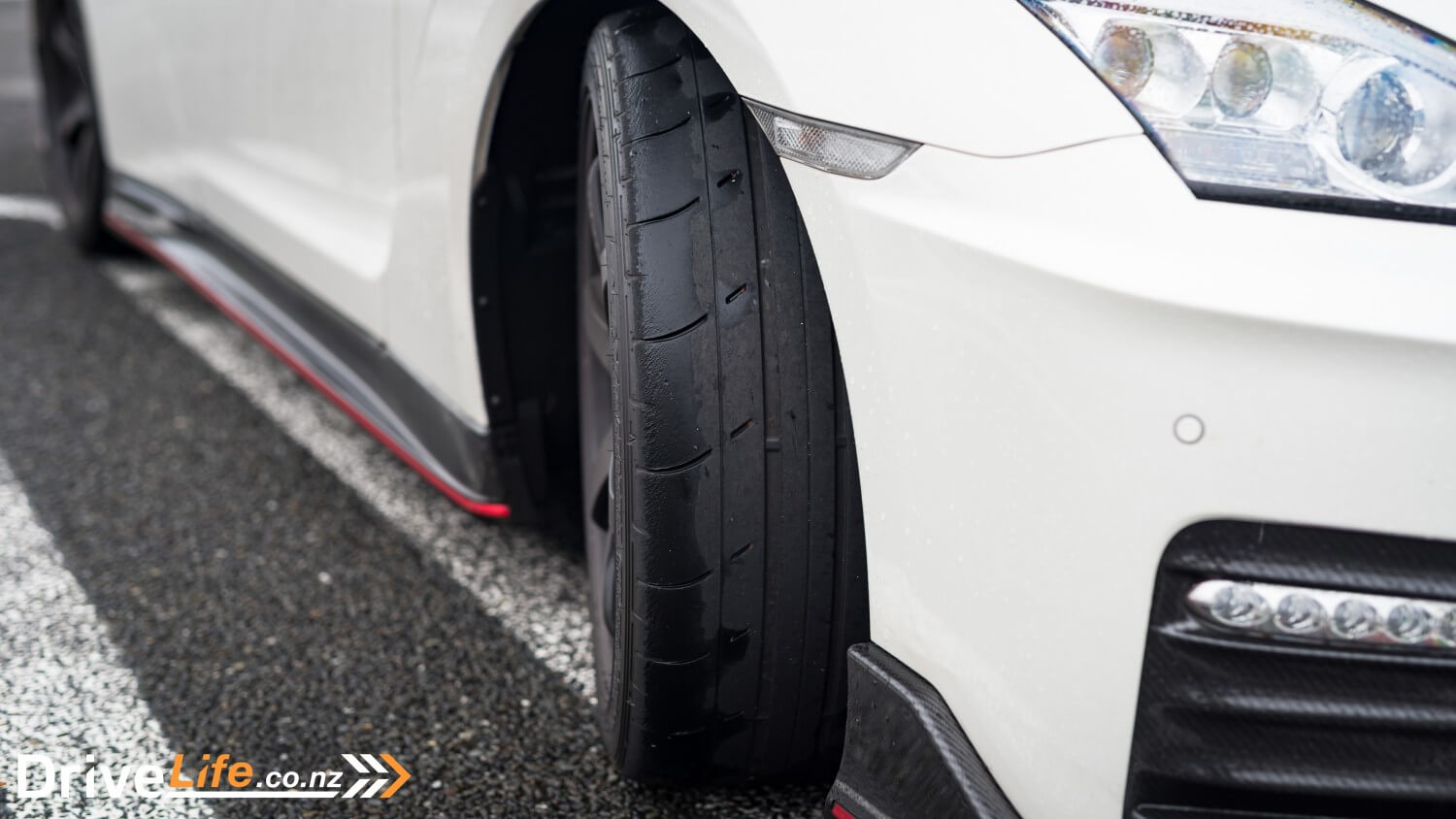
Whoever said the GT-R is a “soulless” car clearly have not driven the NISMO properly. Sure it’s not quite as evocative as an Aston Martin or as ‘raw’ as a GT3 RS, but there’s something wonderfully fun about driving a 441kW car in the pouring rain at silly speeds around a mountain road without dying.
So that’s the ‘R’ bit in its name covered. Dial it down a bit and it’s a perfectly fine as a Grand Tourer. On the motorway, in Drive, and with the suspension on it’s most comfortable setting, it’s a perfectly civilised affair. Sure, there’s a bit of road and wind noise but not too much that it becomes irritating.
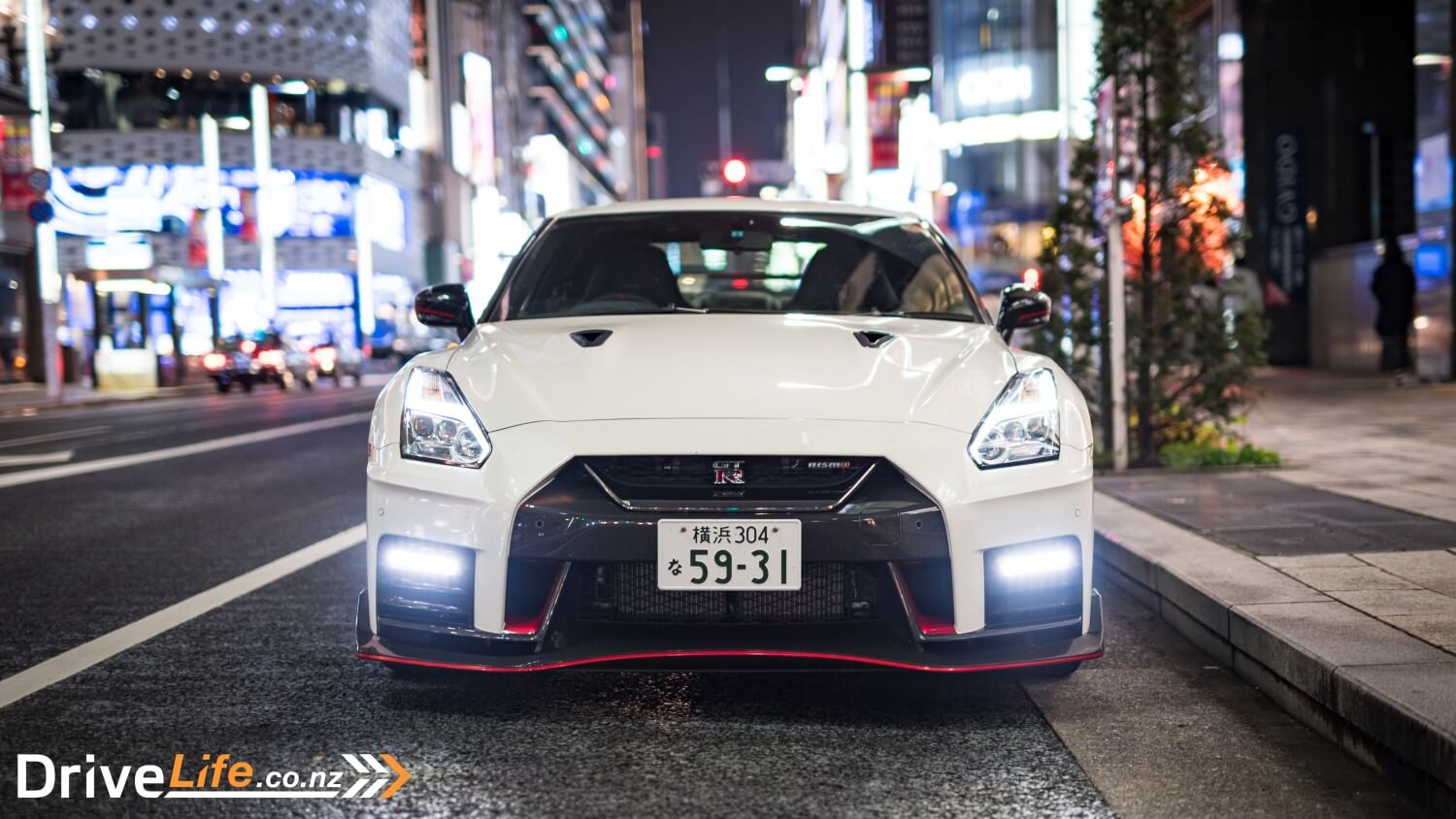
The same goes for the ride. Despite this being a Nurburgring track weapon, the ride on the smooth Japanese motorways was actually more forgiving than certain AMGs. After 1000km in this, no part of my body ached. I could’ve definitely gone on to do another 1000 except the fuel bill would’ve bankrupted me.
It’s not a cheap car to run at all. Servicing and maintaining a GT-R is on par with, and at times more than its European rivals. Then there’s the fuel consumption. Even though most of my journey was done on the motorway, I was only averaging 12L/100km. That was driving it like a saint too, mostly. Sometimes. Okay, just in the parts where there were speed cameras.
Even around town it’s constantly thirsty. It doesn’t have any of that stop start nonsense at idle. The thirst around town is one thing, it’s quite a big car so squeezing through tight streets in this can be just as nerve-wracking as driving this car fast on an open stretch of road. Luckily, it doesn’t have the ground clearance of a snake so you won’t be scraping the carbon splitter on a daily basis.
The Competition
| Brand/Model | Engine | Power/Torque | Fuel, L/100km | 0-100 kph | Price – High to Low |
| Porsche 911 Turbo S | 3.8-litre flat six twin-turbo petrol | 427kW/750NM | 9.1 | 2.9 | $418,000 |
| Audi R8 V10 Plus | 5.2-litre V10 petrol | 449kW/560NM | 12.3 | 2.9 | $355,900 |
| McLaren 570S | 3.8-litre V8 twin-turbo petrol | 419kW/600NM | 10.7 | 3.2 | $339,000 |
| Mercedes-AMG GT R | 4.0-litre, V8 twin-turbo petrol | 430kW/700NM | 11.5 | 3.6 | $320,000 |
| Maserati GranTurismo MC Stradale | 4.7-litre V8 petrol | 338kW/520NM | 14.4 | 4.4 | $310,990 |
| Nissan GT-R NISMO | 3.8-litre V6 twin-turbo petrol | 441kW/652NM | 11.7 | 2.9 | $308,800 |
| Jaguar F-Type SVR | 5.0-litre, supercharged V8 petrol | 423kW/700NM | 11.3 | 3.5 | $240,000 |
The Pros and Cons
| Pros | Cons |
| • Ballistic performance
• Handling and grip unlike anything else on the road • Rarity and exclusivity • Track-focused car that can be used everyday • Surprisingly practical • Improved interior |
• The price tag
• High running costs • Everyone wants to race you |
What do we think of it?
There’s nothing quite like the GT-R NISMO on the market today. The numbers on paper are only one part of this car; the experience in reality is something else. The MY2017 updates have made this a more usable car without losing any of its unique characteristics.
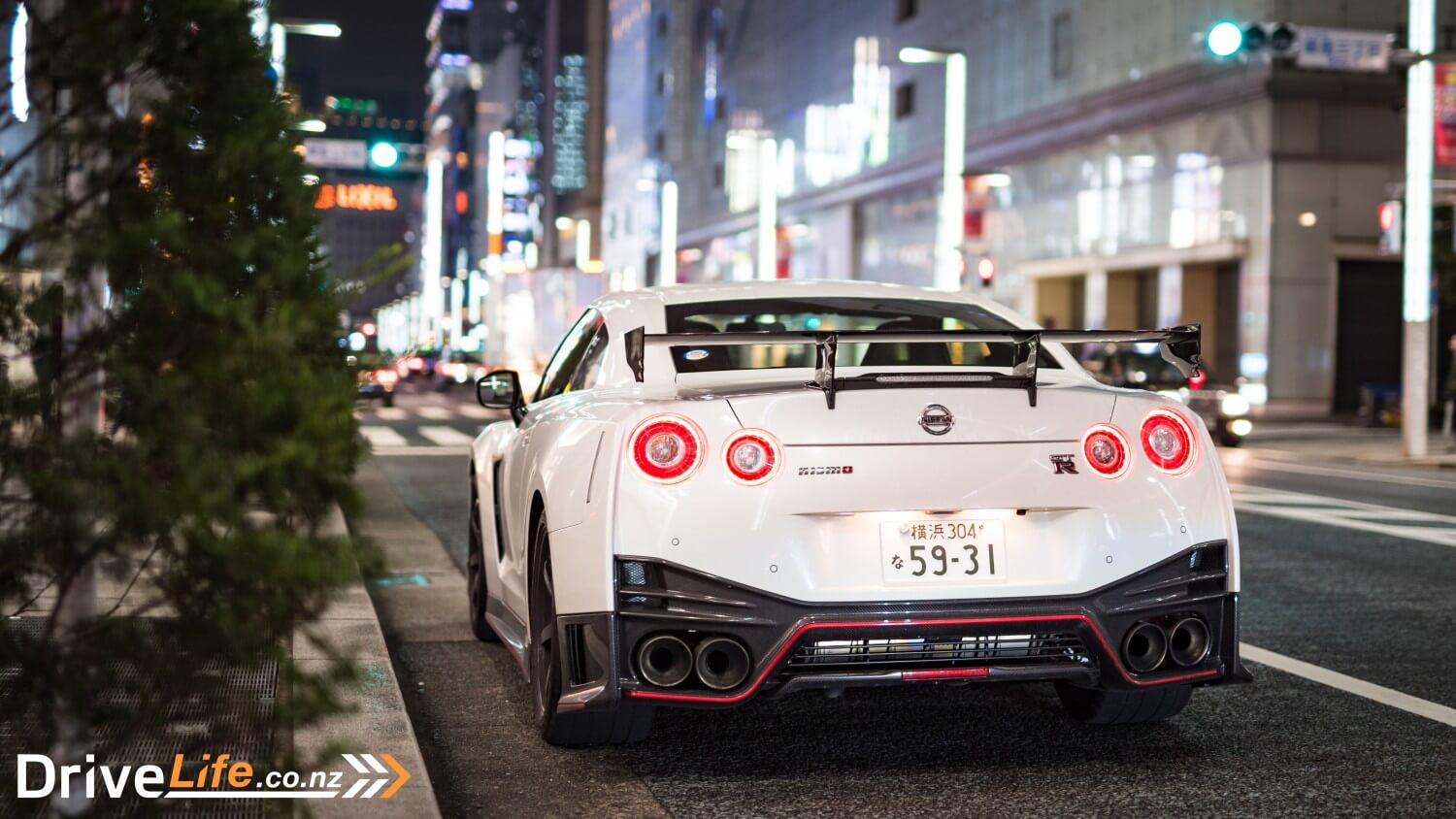
The way it accelerates in a straight line, the way it goes around corners at unholy speeds, and the single-minded purpose of it put it in a league of its own. Yes the asking price is eye-watering and some rivals are arguably better rounded, but with Nissan New Zealand only allocated one unit per year, those wanting exclusivity with ballistic performance needn’t look any further.

| Vehicle Type | Supercar |
| Starting Price | $308,800 |
| Tested Price | $308,800 |
| Engine | 3.8-litre twin turbo V6, petrol engine |
| Transmission | 6-speed dual clutch transmission with manual mode |
| 0 – 100 kph, seconds | 2.9 |
| Spare Wheel | None |
| Kerb Weight, Kg | 1,725 |
| Length x Width x Height, mm | 4690 x 1895 x 1370 mm |
| Cargo Capacity, litres | 315 |
| Fuel Tank, litres | 74 |
| Fuel Efficiency | Advertised Spec – Combined – 11.7L / 100km
Real World Test – Combined – 12L / 100km Low Usage: 0-6 / Medium Usage 6-12 / High Usage 12+ |
| Towing | N/A |
| Turning circle | 11m
Small: 6-10m / Medium 10-12m / Large 12m+ |
| ANCAP Safety Ratings | N/A |
| Warranty | 3 year, 100,000km |
